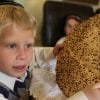The idea of baking your own matzah does sound very enticing. Indeed, there was a time when it was not uncommon for some to bake matzah at home. Baking at home, we may reckon, is not only an authentic Passover experience but a money-saver as well. After all, with just two simple ingredients of flour and water, what could go wrong?
Turns out, quite a lot. As you will read below, there is good reason why virtually no one bakes their own matzahs, instead relying on professional matzah bakeries that operate under rabbinic supervision.
The Closest Thing to Chametz Is Matzah
In order to fulfill the mitzvah, you need to eat matzah made from one of the five grains: wheat, barley, spelt, rye and oats. Not-so-ironically, these are the very ingredients that, when mixed with water, can easily become chametz (leavened), which a Jew may not eat, own or even derive pleasure from on Passover. (For why this is so, see What Is Chametz?)
For this reason, there are very specific guidelines for matzah baking to ensure that the dough does not become chametz. The following is not intended as a how-to guide for DIY matzah bakers, but rather a glimpse into the complexities of baking matzah.
Is Your Flour Chametz?
If one of the five grains sits in moisture for more than 18 minutes, it becomes chametz. This presents a challenge when procuring kosher-for-Passover flour, since the standard production of flour nowadays includes tempering the wheat kernels with water for many hours before grinding them into flour.
So even if you have your baking technique down pat, if you use ordinary flour, you’ll be baking bona fide chametz instead of Passover matzah.1
(We are not even getting into the concept of shmurah [“watched”] matzah, as the verse states, “And you shall guard the matzahs.”2 From here we learn that the matzah eaten at the Seder must have been guarded during the production process with the proper intent that it be used to fulfill the mitzvah of eating matzah.3 Ideally, this guarding starts from the time the grains are harvested or, at the very least, ground into flour. For more about shmurah matzah, see A Tale of Two Matzahs: Why Shmurah Matzah?)
“Well-Rested” Well Water
In order to avoid fermentation, tradition mandates that we use cool well water that was drawn around dusk and then sat overnight, known as mayim shelanu (“water that spent the night”). Warm water is actually forbidden, since it may speed up the fermentation process.
One wishing to bake his own matzah would need to have a well with clean water and a cool place to store it overnight.
Kosher-for-Passover Oven and Utensils
It goes without saying that you need to make sure that all of the utensils that you will be using are kosher-for-Passover. This includes mixing bowls, rolling pins and, of course, the oven.
Bake It Right
Assuming you procured non-tempered, kosher-for-Passover wheat flour and cool well water, are you equipped to bake matzah?
The first thing to be aware of is the place. Fermentation happens faster in a warm environment. As such, matzah dough is not worked and rolled near a window or even in a spot where the sun can shine on it through a window. Additionally, the dough shouldn’t be kneaded or rolled next to the oven, since that too can warm the dough.4 Presumably, radiators or forced-air vents present a similar problem.
Rolling out a flat matzah and getting it to bake smoothly is not as easy as it may seem. If the matzah becomes even partially folded or puffed up with an air-bubble, it may be considered chametz.
Fermentation cannot take place as long as the dough is in motion. As such, the practice is to constantly knead, punch down, and roll the dough. Are you prepared to do so from the moment the water meets the flour until you are ready to pop it in the oven?
Speaking of ovens, you need a very hot oven. This is because, as mentioned above, warm environments are conducive to fermentation. So if your oven does not reach a sufficiently high temperature (or is still warming up when the matzah is placed in it), you may end up with dough that has risen before it had a chance to bake.5
It takes lots of experience to bake proper matzahs with any oven, certainly with home ovens. The thickness of the dough, the size of the matzah, and the heat of the oven all need to be considered. Unlike when baking a cake or bread, you cannot afford to mess up or improvise as you go, as you will most likely wind up with chametz (even if it may look like a matzah).
Clean Up and Mess up!
Perhaps the biggest challenge of all to maintaining a chametz-free environment in your matzah bakery is what to do with the scraps. Dough that has not been worked for 18 minutes is considered chametz.
As such, you need to clean all utensils, as well as the table and any other area that has residual dough, every 18 minutes. Even just a tiny scrap of dough is chametz and can render any utensils (or matzah) chametz.
And this is assuming everything went according to plan.
If something got messed up, be it in the kneading, rolling or baking process, the dough may have become chametz, and again, you would need to clean and/or kasher all the utensils or oven before starting over.
As you can see, it is quite a complicated process, and virtually no one in the know attempts to bake matzah at home, instead relying on professionals.
If you need help finding kosher-for-Passover shmurah matzah in your locale, contact your local Chabad center or shop online here.








Join the Discussion